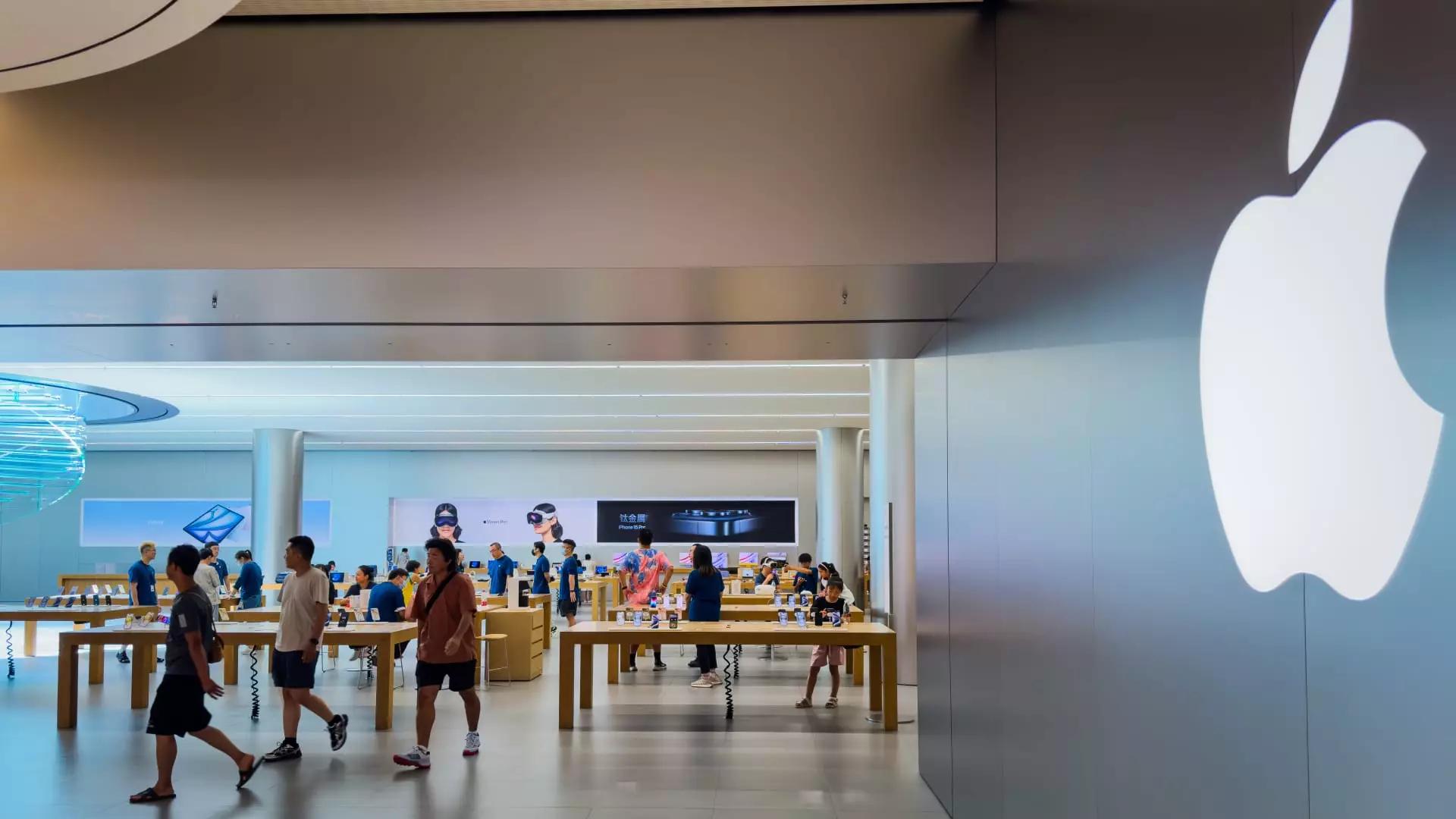The proposed tariff strategy championed by then-President-elect Donald Trump presents a significant challenge for the tech hardware market. The candidate’s pledge to impose tariffs ranging from 10% to 20% on all imported goods—and a staggering 60% on products from China—raised concerns among tech companies, particularly those with significant exposure to Chinese manufacturing. In the realm of consumer electronics, Apple Inc. stands out due to its unique set of circumstances. While many tech companies that manufacture predominantly in China brace for potentially severe repercussions, Apple may navigate these choppy waters more adeptly, thanks to its robust profit margins and brand resilience.
Financial analysts have noted that Apple’s high gross profit margins provide a buffer against the anticipated impacts of tariffs. Morgan Stanley analyst Erik Woodring states that despite the common perception of Apple as a “poster-child” for Chinese manufacturing reliance, the company’s gross margins are more substantial than its competitors. This translates to a relatively smaller direct hit on their earnings per share (EPS) from tariffs. Woodring highlights that the tariffs would not have the most detrimental effect on Apple compared to other firms in the technology sector that operate on thinner margins and are significantly intertwined with Chinese production capabilities.
In the broader market context, Apple’s stock performance has lagged behind other companies perceived to benefit from Trump’s election. Companies like Tesla saw immediate stock booms post-election, while Apple remained relatively stagnant. Comparatively, Apple has underperformed the S&P 500 this year, a troubling sign for investors who are wary of potential market volatility.
As the tariff realities begin to solidify, projected EPS loss figures for Apple raise eyebrows. Analysts at Morgan Stanley are forecasting a 5.5% decline in EPS with a 15% tariff on imports from China, and an alarming 9.2% drop under a potential 25% tariff. These predictions place Apple among the top five most vulnerable tech firms regarding the imposition of tariffs on Chinese goods. Industry analysts have echoed this sentiment, emphasizing that these tariffs will inevitably erode Apple’s earnings, impacting revenue either through reduced sales volumes or diminished profit margins as the company may choose to absorb costs rather than transfer them entirely to consumers.
Despite these daunting projections, some analysts maintain a more optimistic view, suggesting that Apple’s inherent pricing power will help mitigate the impacts of these tariffs. CFRA Research analyst Angelo Zino notes that due to Apple’s strong market position, any incremental burden from tariffs may not hit as hard as anticipated. This perspective aligns with Bank of America analyst Wamsi Mohan’s assessment that the tariff implications, while certainly present, are manageable.
Looking ahead, several potential strategies may help Apple offset the impacts of looming tariffs. One feasible approach involves the continued expansion of its manufacturing footprint across other countries, such as India. Apple has already taken steps in this direction, doubling iPhone production in India and generating approximately $14 billion from this segment. This diversification reduces reliance on China and helps buffer the company against tariff uncertainties.
Should the Trump administration proceed without granting exemption waivers, Apple’s ability to pivot its manufacturing strategies could turn a potential setback into a resilient operational model. Indeed, estimates suggest that a substantial portion of Apple’s products sold in the U.S. could soon be sourced from countries outside China. Analysts, including Mohan, propose that about 80% of Apple’s offerings might be sourced from alternate locations, thereby mitigating risks associated with tariffs.
Despite the turbulence associated with tariffs and economic shifts, Apple’s future rests not solely on its responses to current challenges but also on innovation and product development. Anticipation surrounding new product releases, particularly the iPhone 17 and advances in Apple’s iOS platform, builds investor confidence. Analysts perceive that forthcoming innovations could initiate a new sales cycle that invigorates consumer interest.
Apple may find itself in a transitional phase, navigating through the immediate ramifications of tariffs while simultaneously positioning itself for long-term growth through technological advancements. Therein lies the silver lining; as tariffs threaten short-term profitability, Apple’s established branding, market strategy, and innovative potential help sustain investor confidence in a company navigating potentially stormy seas.
While the potential for tariffs poses a headwind for Apple’s profitability, the company stands poised to address such challenges through its pricing power, manufacturing adjustments, and a continued commitment to innovation.


Leave a Reply